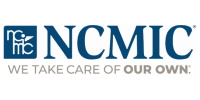INSURANCE OMNIBUS LAW (A8402)
The following is a summary of the key provisions relevant to chiropractic within the new Insurance Omnibus Law. Section 3, 19 & 32 Prohibits an insurer or HMO from implementing an adverse reimbursement change to a contract with a health care provider unless insurer or HMO gives health care professional 90 days written notice of the change and allows health care professional 30 days to terminate his/her contract with insurer or HMO. Effective date is January 1, 2010. Section 4 & 17 Insurers offering comprehensive policies establish grievance procedures and provide access to care consistent with insurance law. The effective date is January 1, 2011. Section 6 Requires insurers and HMOs to pay claims submitted electronically within 30 days and expands the provision of the PROMPT PAYMENT LAW to self-insured municipal cooperative health plans. This is effective January 1, 2010. Section 7 Prohibits insurers and HMOs from denying a claim on the basis that they are coordinating benefits – unless insurer or HMO has reasonable basis to believe enrollee has other insurance which is primary. Effective January 1, 2010. Section 8 If prompt payment violation is determined, an insurer or HMO shall not be subject to penalty if insurer or HMO has processed at least 98% of claims submitted within the calendar year. In the past, the insurer would pay claims to avoid penalties, but then implemented retrospective audits. This is effective January 1, 2010. Section 9 Health care claims must be submitted by health care professional within 120 days after date of service. Allows health care professionals to request reconsideration of a claim that is denied as untimely. If health care professional demonstrates untimely claim was a result of an unusual occurrence and health care professional has pattern of timely claim submission. HMO/insurer may reduce untimely claim by 25%. Effective April 1, 2010. Section 10 This portion contains most of the NYSCA drafted language on retrospective audits for the benefit of all title VIII health care professionals. Limits of look back period of time payers can go when making routine retrospective audits to 24 months. In addition, before payer can commence a recovery effort, payers must give providers written notice at least 30 days in advance of any recovery effort providing the practitioner with vital information concerning the claim and a reasonably specific explanation of any proposed adjustment as well as an opportunity to challenge the overpayment recovery effort. No time limit exists in situations where the payer holds a reasonable belief of fraud, intentional misconduct or abuse of billing. Effective January 1, 2010. Section 12, 13, 14 & 31 Inhibits insurers and HMOs from treating a hospital that participates within a network as a nonparticipating provider solely because the health care provider admitting or rendering services to the insured/enrollee is a nonparticipating provider. These sections also prohibit insurers and HMOs from treating a health care provider that participates within a network as a nonparticipating provider solely because services are rendered in a nonparticipating hospital. This is an important change, particularly for chiropractors and/or hospital based chiropractic practices. Effective date is January 1, 2010. Section 20 & 33 These provisions allow a newly licensed professional and providers relocating to NY to join the group practice of credentialed par providers participating in a HMO/MCO, a nonprofit indemnity or medical service plan to be provisionally credentialed by the health care plan until such time as the plan makes its final determination regarding the provider’s application. Effective date is October 1, 2009. Section 27 & 40 This requires an external appeal agent to notify a provider when appropriate of an external appeal determination. Effective date is January 1, 2010




